Video by J. Scott Parker | Visual and Broadcast Communications
Land-grant lager
Long known for research and outreach that has boosted the commonwealth's wine industry, Virginia Tech now has a brewhouse in the Department of Food Science and Technology's Innovation Collaboratory designed to serve Virginia's burgeoning craft brew businesses.
Ingredients for a Virginia Tech land-grant lager:
Research—Carl Griffey, professor of crop and soil environmental sciences, is developing winter malt barley varieties suitable for the eastern U.S., and the brewhouse offers him a quality-control lab. And Holly Scoggins, associate professor of horticulture, has just planted an experimental hops yard to help identify the varieties that grow best during Virginia's shorter summers.
Learning — The gleaming, German-built, 2.5-hectoliter Esau & Hueber system teaches students about malting, brewing, and fermentation. Some of the machinery's automation has been removed to force students to learn, for instance, when to throw the valves to control temperature. "If you make a mistake, you've got to learn how to fix it," said plant manager Brian Wiersema.
Sustainability — Researchers are investigating methods to turn used barley into plastic and fuel, and the brewhouse itself runs as a true farm-to-glass operation.
Economic outreach — Regional breweries can use the facility, which has a capacity of 66 gallons of beer per batch, to develop new varieties of ales and lagers and to test local ingredients without taking their own facilities off-line. Also, the brewhouse could help attract breweries to the area, while the agricultural research may yield new crop varieties for farmers.
Global education — The university is planning a partnership with the Technical University of Munich, where students could test their classroom experience in the heart of Bavaria.
Good cheer — What could be better than taking a college course in advanced malting and brewing? Well, the Innovation Collaboratory will soon have a distillery unit for research and education.
The bad news for Hokies longing for a taste of land-grant lager? The student-brewed beer isn't available for public consumption.
Around the Drillfield
- Athletics
- Corps of Cadets
- How Tech Ticks
- Moment
- News
- Ology
- Philanthropy
- Question
- What's In It?
 Department of Food Science and Technology's Innovation Collaboratory. Photo by Jim Stroup.
Department of Food Science and Technology's Innovation Collaboratory. Photo by Jim Stroup.
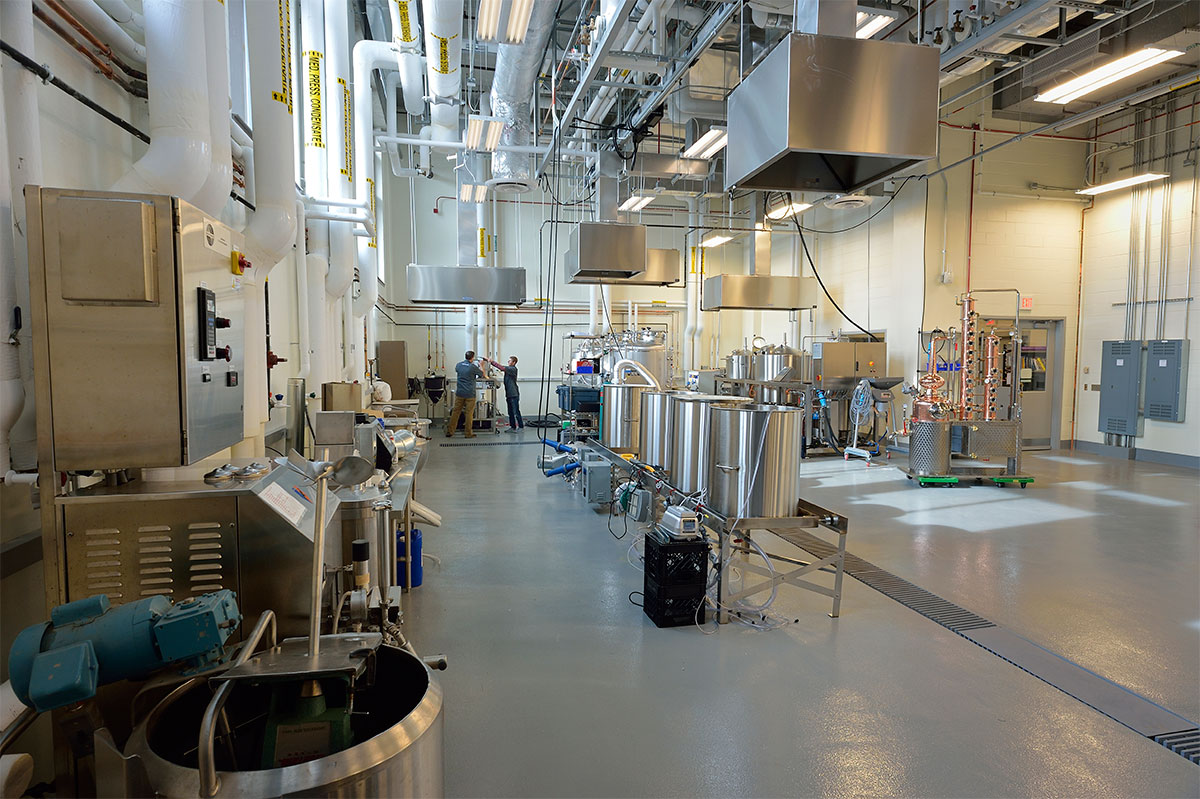 Department of Food Science and Technology's Innovation Collaboratory. Photo by Jim Stroup.
Department of Food Science and Technology's Innovation Collaboratory. Photo by Jim Stroup.
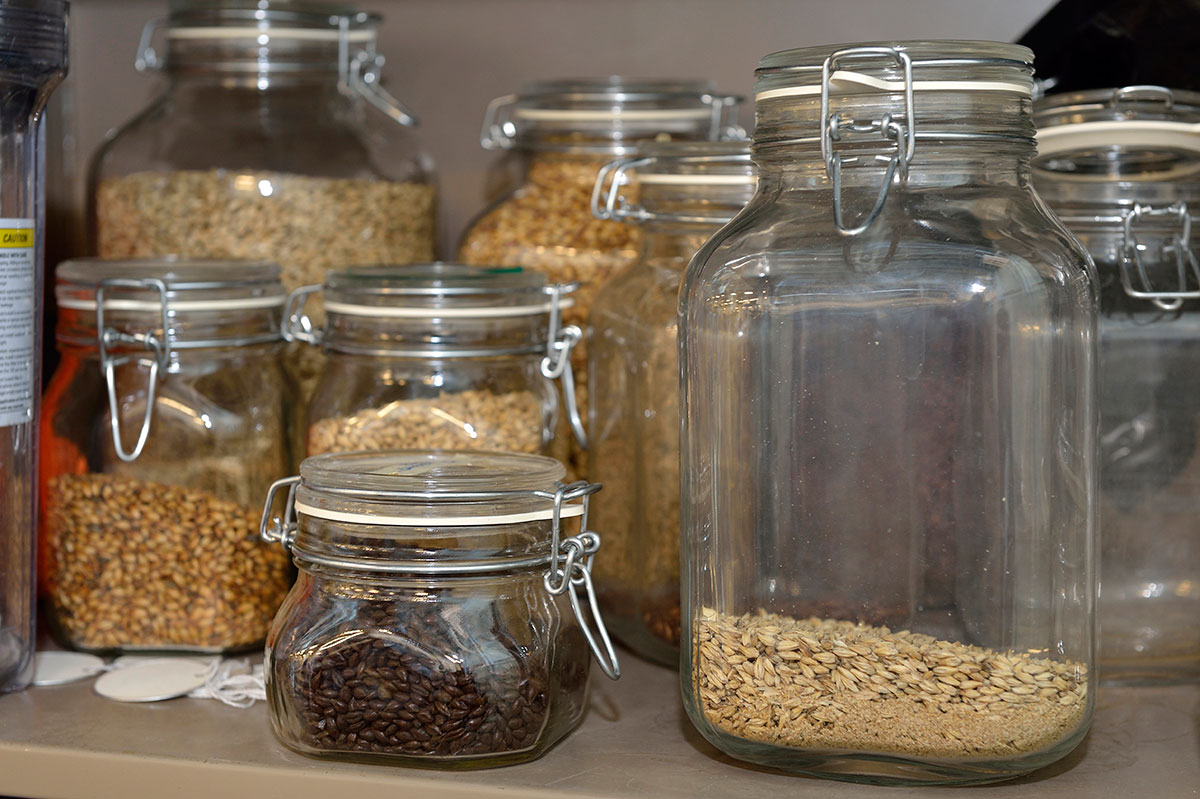 To determine how well they malt, the brewhouse tests different varieties of Virginia-grown barley. Photo by Jim Stroup.
To determine how well they malt, the brewhouse tests different varieties of Virginia-grown barley. Photo by Jim Stroup.
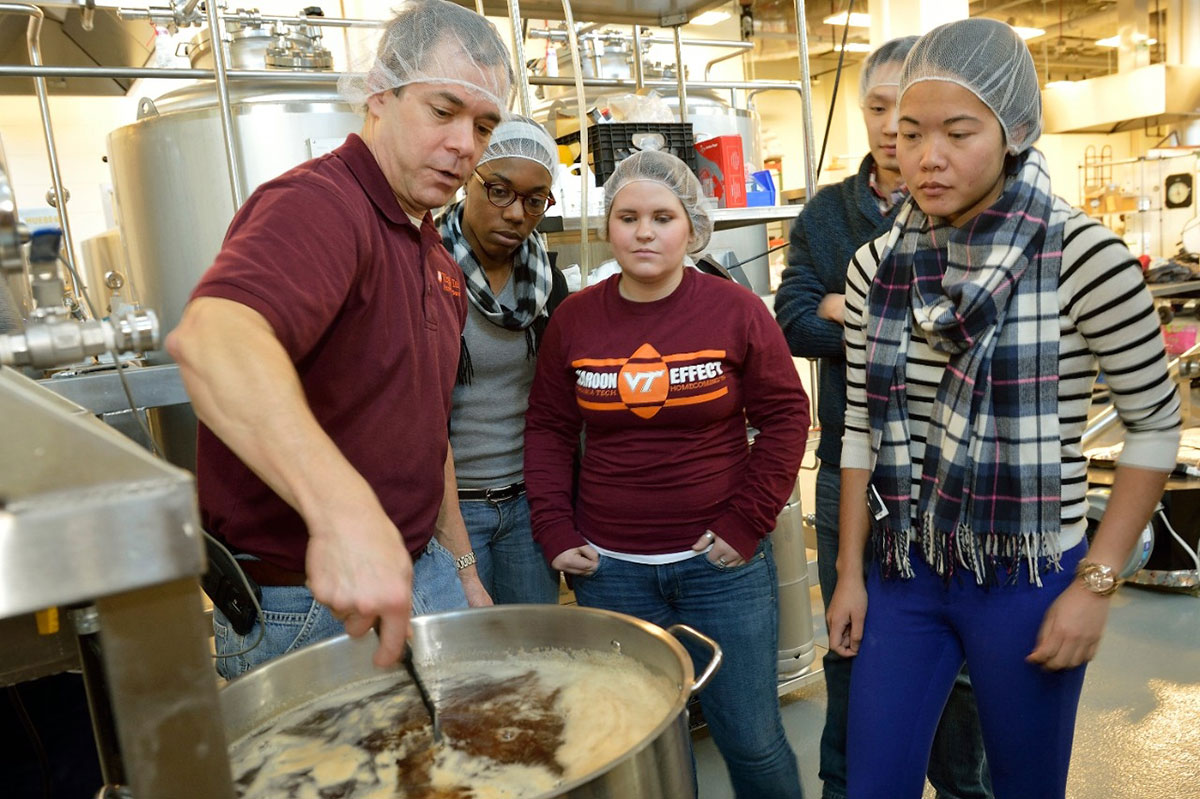 Students watch as Bruce Herbert, one of the brewhouse managers, stirs a batch of suds. Photo by Jim Stroup.
Students watch as Bruce Herbert, one of the brewhouse managers, stirs a batch of suds. Photo by Jim Stroup.
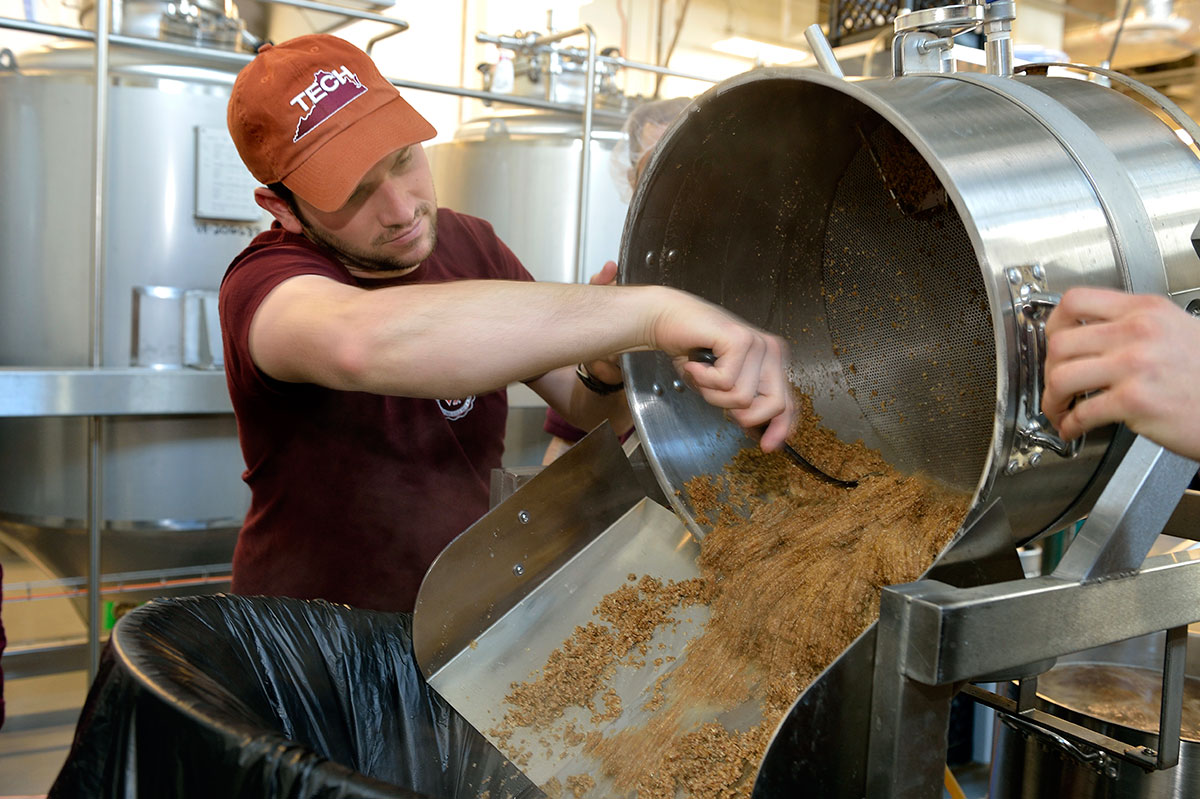 A student spoons out spent barley. Photo by Jim Stroup.
A student spoons out spent barley. Photo by Jim Stroup.
 Beer brewing expands the study of fermentation in the Department of Food Science and Technology. Photo by Jim Stroup.
Beer brewing expands the study of fermentation in the Department of Food Science and Technology. Photo by Jim Stroup.
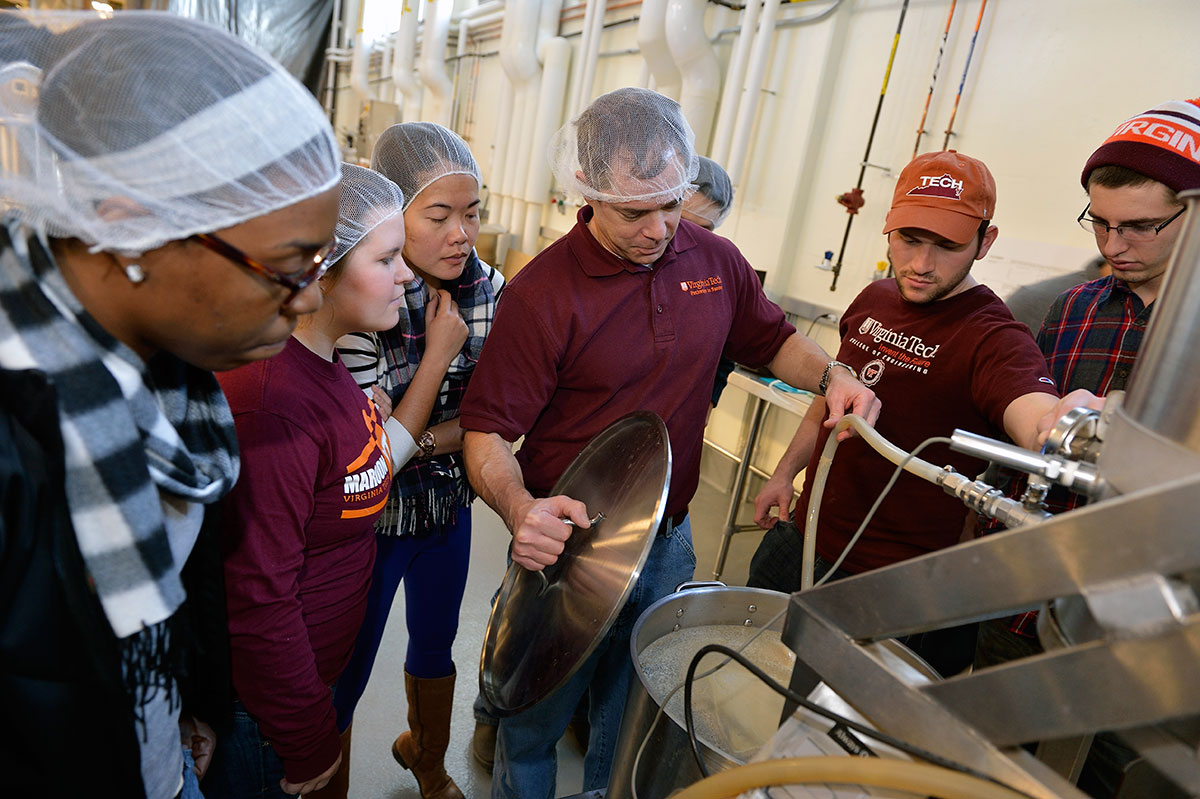 Herbert and students check a batch of beer. Photo by Jim Stroup.
Herbert and students check a batch of beer. Photo by Jim Stroup.